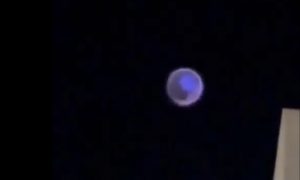
FPV drone with cable control developed in Ukraine
The Ukrainian company 3DTech is preparing to supply the military with the first batch of FPV drones controlled by fiber optic cable, which are not susceptible to electronic interference.
The founder and CEO of the company, Oleksii Zhulinskyi, told Forbes about this.
3DTech has successfully tested its new Predator REBOFF strike drone in combat conditions, which instead of the usual radio communication is controlled via fiber optic cable. This communication system is completely protected from enemy electronic interference and makes the drone extremely effective on the battlefield.
The company’s drone is currently undergoing certification to be approved for procurement by the Armed Forces.
Meanwhile, the company has already launched the first batch of FPV strike drones. According to Zhulinskyi, with the available resources, they can produce up to a thousand drones in a relatively short time.

Predator REBOFF FPV drone
The new drone, instead of traditional FPV radio communication systems, is equipped with a reel with a cable that unwinds during flight.
The company offers 10-inch drones with two coils that allow you to fly at a distance of 5 or 10 kilometers. At the same time, the “short” version can carry up to 2.3 kg of load, and the “long” version can carry only 1.2 kg. This is due to the weight of the cable itself.
“The winding mechanism weighs 300 grams, and 5 kilometers of cable weighs 1.25 kg, so the system with a 10-kilometer range carries an additional 2.8 kilograms, which significantly reduces the available payload,” Zhulinskyi says.
As part of the research, the developers also tested 13-inch drones that, with a 10-kilogram cable, were able to carry a 2 kilogram warhead. In their opinion, such drones can have a longer range if more powerful drones like the Queen Hornet are used.
To fly longer distances, they used larger drones. A 13-inch UAV can carry enough cable for 10 kilometers, as well as a 2 kilogram/4.4 pound warhead. Longer ranges would be possible with larger drones, such as the Queen Hornet.
In addition to protection from enemy radio frequency interference, this data transmission technology also opens up new advantages. In particular, the pilot receives an order of magnitude better image compared to traditional FPV and no longer faces signal loss with increasing distance or the radio horizon effect.
“Certain sections of the front line have difficult terrain, including elevation changes, valleys and forests, which makes it difficult to use radio-controlled drones. Fiber optic drones completely eliminate these problems,” Zhulinskyi said. “The enemy often expects a drone to attack from above, so they keep an eye on the sky. However, fiber-optic drones can approach targets outside the enemy’s field of vision by flying at low altitude, which increases their effectiveness and adds an element of surprise.”
According to Zhulinskyi, the fiber optic cable is surprisingly strong. He recounts an incident during the first test flight when a group of cyclists crossed the drone’s path and tripped over the cable.
“It didn’t break, which proves its strength, but we had to apologize a lot because the cyclist was outraged,” Zhulinskyi said.
But although the cable has good tensile strength, there are other nuances to piloting such drones: the cable becomes brittle if it is bent more than 45 degrees or tangled in a knot.
“Pilots really need to be more careful,” says Zhulinskyi. “Although our coil attachment system minimizes the risk of breakage, the pilots still need to be aware of the cable that is being pulled and avoid sudden or fast maneuvers that could cause it to be cut by the propellers.”
SUPPORT MILITARNYI
Even a single donation or a $1 subscription will help us contnue working and developing. Fund independent military media and have access to credible information.


 Urich
Urich 
 Андрій Харук
Андрій Харук 
 Контужений Безпілотник
Контужений Безпілотник 

 Центр ініціатив ПЖ
Центр ініціатив ПЖ 



 Vadim Kushnikov
Vadim Kushnikov 
 Андрій Тарасенко
Андрій Тарасенко 
 Юрій Юзич
Юрій Юзич 
 Віктор Шолудько
Віктор Шолудько 
 Роман Приходько
Роман Приходько 




